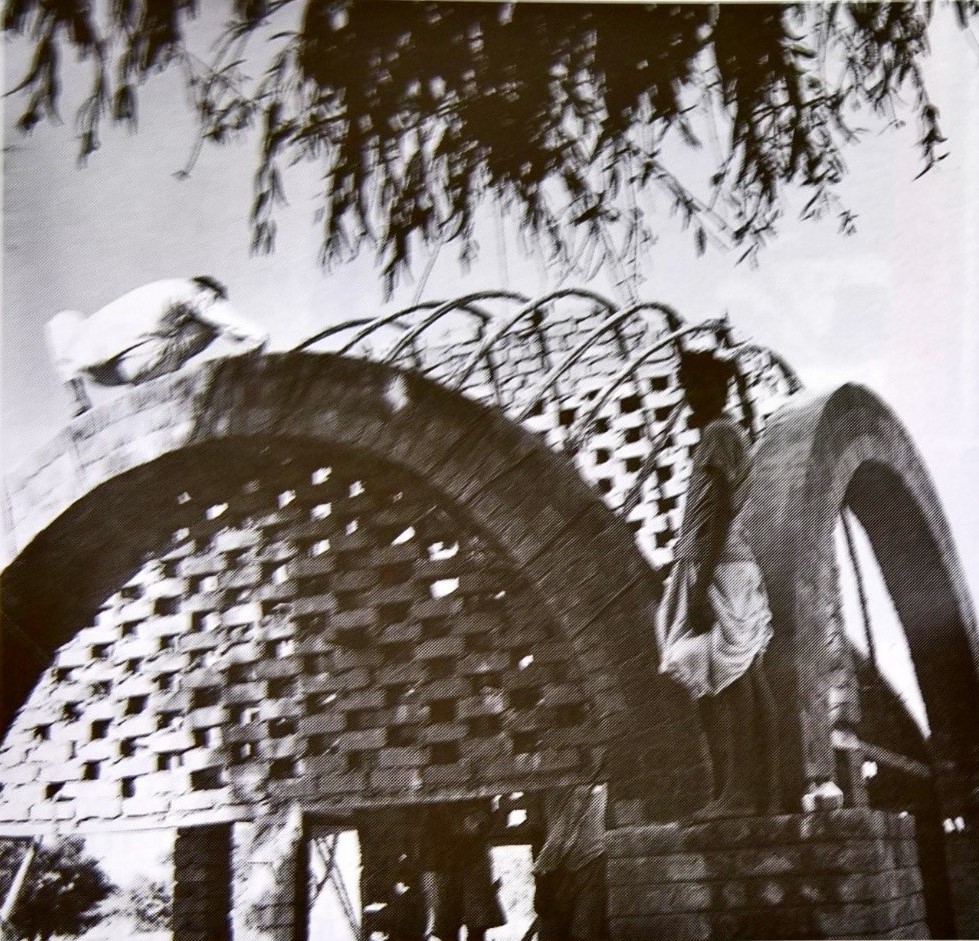The Bavra Story
Alexander’s first building demonstrated his quest for simple beauty in the village of Bavra, in India, where he lived after completing his Ph.D. in Architecture at Harvard. Excerpt from The Nature of Order: A Vision of a Living World, Book 3, pages 526-7.
In 1961, at the age of 24, I lived in a village in Gujarat, India, for seven months. While I was living there, I felt I must be useful and after discussing with the villagers, we decided that a school would help them most. The four-room building is very basic. I did nothing except to try and make something useful that had a feeling like the village. This was my start in architecture. It was the first building I ever made and the first time I invented anything in construction. I had 5000 rupees (less than 1000 dollars) to build the school. Couldn’t import materials. No wood to speak of available. The village was five miles from the nearest road. What to do?
I asked the village potter what he could do. He showed me something he was used to making in the course of making roof tiles, a thing called a “guna” tile – a hollow truncated cylindrical tile with one end smaller than the other, about 16 inches long with a six-inch diameter at the base and a four-inch diameter at the top. In the normal course of events, it was split in two, down the middle, to form two roof tiles.
This fit perfectly into the situation. Mud and clay were abundant. There was virtually no wood available but small sticks and twigs sufficient for firing a rudimentary kiln were available in the scrubland around the village. I asked Shankarial, the potter, to make 3000 of these conical tiles for me just using mud from the village and then baking them but leaving them as cones, not splitting them down the middle.
Then I made the domes for the village school like this. Each dome had four brick arches on its four sides. Now imagine riffling these stacked tiles like a deck of cards, to get a curve. That is how we made the near-spherical vault. We laid one row of these next to the brick arch. Then the next one on the front row of tiles, and the next row on those. Because of the other brick arch, the riffled tiles rose higher and higher as they followed the curve. In those places where there was too much pressure, we filled them with earth so they didn’t crack under their own weight.
The formwork
Finally we plastered the whole thing. And, to make a tension tie that would resist outward thrust in the dome, I used cotton-bailing strap – a thin tensile steel strap used for tying up cotton bales and something we could get for nothing in the cotton-producing fields. Then plaster over the cotton-bailing strap. That was all.
Even then, at the very beginning of my life as an architect, I knew instinctively that to build a building, one has to invent ways of making. And, throughout my life I have always tried to invent ways of building which could easily, cheaply, make life and living centers in building forms. This was one of the first things I ever invented.
The Bavra Community
At least forty or fifty people from the village helped to build this building.
Christopher Alexander



